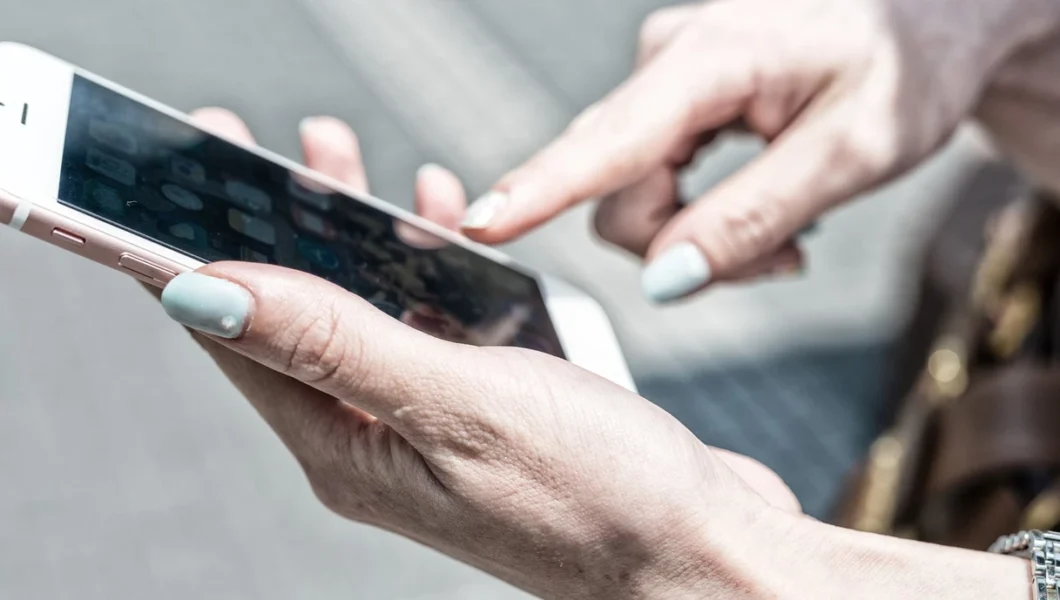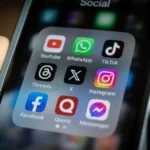Several SpaceX launch delays have pushed a commercial moon lander’s liftoff back by a month.
Intuitive Machines , which had hoped to launch its robotic IM-1 mission no earlier than Jan. 12, 2024, will now wait an extra month to launch with SpaceX .
The new launch window begins no earlier than mid-February, Intuitive representatives said in a release on Tuesday (Dec. 19).
Once the launch window opens, it will last several days.
“The updated window comes after unfavorable weather conditions resulted in shifts in the SpaceX launch manifest,” Intuitive officials wrote.
Poor weather in Florida caused SpaceX to recently delay the launch of both a Falcon 9 rocket laden with Starlink satellites and a Falcon Heavy tasked with lofting the U.S. Space Force ‘s mysterious X-37B space plane , which can stay in orbit for a year or more at a time.
Related
Moon mining gains momentum as private companies plan for a lunar economy IM-1 is poised to land at the south pole of the moon on what could be the first commercial mission to the surface, although that title depends on the launch timeline of the Peregrine lander built by Astrobotic Technology .
Peregrine is now manifested to fly Jan. 8 on board United Launch Alliance’s Vulcan Centaur rocket, the debut mission for that launcher.
Intuitive Machines emphasized that its spacecraft is ready for launch, and it is only waiting for its Falcon 9 rocket to be available and for the launch window to open.
After the mission launches from Cape Canaveral Space Force Station on Florida’s Space Coast, the Nova-C lander will aim to touch down at the rim of Malapert A, a crater near the lunar south pole, when “specific lighting conditions” are available.
Several international private ventures have attempted, but not succeeded, in landing on the moon in recent years.
Tokyo-based company ispace’s Hakuto-R lander had a go this past April, for example.
But NASA hopes to make commercial landings a regular feature in the near future.
Both IM-1 and the Peregrine mission are funded under the agency’s Commercial Lunar Payload Services program, or CLPS.
CLPS aims to support future crewed landings of NASA’s Artemis program , which aims to establish a research base near the moon’s south pole in the coming years.
— Why Is It So Hard to Land on the Moon?
—
NASA’s Artemis 3 astronaut moon landing unlikely before 2027, GAO report finds — Missions to the moon
Past, present and future NASA hopes to put the first human mission, Artemis 3 , at the south pole in 2025 or 2026.
Given delays with SpaceX’s Starship lander and some private spacesuits, however, the Government Accountability Office suggested that 2027 is the more realistic target .
Four astronauts will circle the moon with Artemis 2 no earlier than late 2024, assuming that crew training and the development of key hardware — the Orion spacecraft and Space Launch System rocket — continue to progress on schedule.
BATH, UNITED KINGDOM – AUGUST 01: In this photo illustration the logo of US online social media and From the rise of ChatGPT and Twitter’s rebrand to X, to the launch of Threads and diminishing buzz around the metaverse, 2023 brought major changes to the digital landscape and 2024 is poised to do the same.
Here are the top digital marketing trends the best brands and influencers will monitor and leverage in 2024: Marketers have long optimized their websites and content to rank higher on search platforms like Google and Bing – but increasingly, the most cutting-edge marketers are optimizing the social media content with equal detail.
Last year, the top search engine in the world, that roughly 40% of Gen-Z is using TikTok and Instagram for search instead of Google.
That’s why, it’s more important than ever for digital marketers to consider nuances such as keywords and metadata on social media posts.
This also means captions, inclusive of keywords and descriptive data can help improve a brand’s post discoverability.
So, while brevity historically drove social engagement, increasingly more keywords and content are likely to help boost post ranking.
In October 2022, Elon Musk completed his acquisition of then-Twitter with the reported-quest to return Twitter to a free speech platform.
Since then, Musk ignited a flurry of changes at the platform.
First, in January, Musk banned third-party apps from Twitter and put the platform’s API behind an expensive paywall.
Then, in April, Musk announced users would pay for verification marks.
Similar to other social platforms, the blue checkmark previously signified influencer status, but Musk eliminated this legacy verification program and instead, transitioned to paid program, whereby the blue checkmark represents a paid subscription.
The most notable update came in July 2023 when Musk rebranded Twitter to X, in a reported-attempt to make Twitter more of an “ ” platform where users can meet more of their consumer needs (banking, retail, etc.).
Then, in October, Musk announced an annual fee of $1 for users to post on the social network in Philippines and New Zealand.
Users who don’t pay can only access read-only features.
A year after Musk’s acquisition, the platform’s ad revenue is down 55% year-over-year.
As these changes settle in, X is likely to continue to evolve and launch new forms of monetization.
Of course, the value of a platform lies in its usage and with Twitter’s global traffic down this year could be crucial for the platform to prove its relevancy in the marketplace.
In July, Meta launched Threads, a text-based app built by Instagram, where users can view and follow public conversations.
As of November, Threads had a reported , a number which is sure to continue to rise after Threads was released in Europe last week.
While Threads is still relatively nascent in the digital space, as the app becomes available to more and more geographies and users, it could surpass X’s usage and usurp their former value as the go-to public text platform.
TikTok and ChatGPT may be more topical among marketers, but in many ways, YouTube is actually more impactful.
That’s because YouTube is more than a behemoth of a social media video platform, it’s also the second largest search engine in the world.
So, yes, it’s technically a social media platform but users — and marketers — leverage it much more like a search engine.
And if youth user typically behavior dictates what is next in digital, YouTube will maintain its top placement.
reports that 95% of teens ages 13 to 17 use YouTube – that’s more than any other social media platform.
For comparison, 66% use TikTok and 62% use Instagram.
Not only is YouTube highly utilized, the time spent on the platform is astounding, with Pew Research reporting say they use YouTube “almost constantly.”
YouTube Shorts specifically is a trend to watch.
Earlier this year, Google reported YouTube Shorts generates more than .
This is still a fraction of Meta’s Reels, which are viewed , but strong growth.
Given regulatory data concerns around TikTok, many marketers will continue to turn to YouTube Shorts and Meta Reels for their short-form video content.
Two years ago, Facebook changed its name to Meta, indicating a focus on the metaverse, which, according to is defined as “the next evolution in social connection and the successor to the mobile internet.”
This intentionally-broad definition enables Meta and tech companies to construct the metaverse as a mix of digital trends: augmented reality, virtual reality, gaming and more.
So, if the metaverse is increasingly positioned as a blend of the digital and physical world, the most closely correlated technology will be artificial intelligence.
The metaverse is still topical in its own right but in many ways, artificial intelligence will be more buzzworthy in 2024, even for Meta.
At Meta Connect in September, Zuckerberg announced the rollout of , an evolved chatbot for WhatsApp, Messenger and Instagram.
In addition to Meta AI, Meta launched 28 more artificial intelligences in beta.
Beyond traditional chatbots, these artificial intelligences include creative tools and characters and built with custom personalities, interests and opinions.
Meta may be the most mainstream platform for chatbots, but perhaps the most-talked-about artificial intelligence product of 2023 is ChatGPT, OpenAI’s chatbot.
ChatGPT launched in late 2022 and while much remains to be determined about ChatGPT’s role in marketing strategies, content creation was the first popular use case.
In fact, ChatGPT sparked an uptick in AI-written e-books, with some authors using the tool to take books from idea to publication in just hours.
ChatGPT is also gaining wider adoption among everyday consumers.
In February, ChatGPT set the record for the fastest-growing consumer app in history and as of November, OpenAI CEO Sam Altman announced ChatGPT had over active users.
With ChatGPT usage on the steady rise, chatbots are likely to continue to dominate digital discourse in 2024.
While initial growth looks promising, the success of the metaverse, chatbots and emerging artificial intelligences, as with all digital trends, is contingent upon continued user adoption, brand monetization – and of course, government regulation.
The adage is true that “people follow people” and so, influencers are poised to continue to dominate digital trends in 2024.
Yet, the terms of what defines an “influencer” are beginning to shift.
that nano-influencers, accounts with 1,000-10,000 followers on a social media platform, generate more than twice the engagement of macro-influencers.
That’s why, more and more consumer brands, particularly in beauty, fashion and wellness, are leveraging nano-influencers.
An added benefit?
They also typically charge brands a much lower price point.
Of course, for massive consumer retailers, depending on the campaign, macro-influencers are still the holy grail since they drive broader reach and brand recognition.
Yet, for companies looking to drive engagement with a more targeted audience in 2024, nano-influencers could be the key.
** From Artificial Intelligence and X, to YouTube Shorts and nano-influencers, there’s no shortage of trends to watch in 2024 – and yet, new platforms, products and capabilities will continue to emerge for advertisers to monitor, test and measure.
As with any digital strategy, in 2024, the best brands will surprise and delight target audiences as where, how and when, they reach them continue to evolve.
Some Apple users are eligible to receive a small chunk of change as part of a $25 million lawsuit settlement related to the tech company’s Family Sharing feature.
Earlier this month, Apple agreed to allocate funds for users enrolled with at least one other person in the popular subscription sharing system between June 21, 2015 and January 30, 2019.
Depending on the final number of filed claims through the official website , recipients will likely receive around $30—it may not be much, but that covers at least a couple months of Netflix or Hulu.
Those who believe they qualify have until March 1, 2024, to fill out, print, and mail a form currently available through the case’s official website , after which time a final approval hearing is scheduled for the next month to confirm all the fine print.
Originally filed in 2019, the lawsuit alleged Apple misrepresented how many thirty-party apps and services qualified for its Family Sharing option.
As its name implies, as many as six enrolled family members can all use the same subscriptions to Apple services such as Apple Card, Apple Music, Apple News Plus, Apple TV Plus, and Apple Arcade.
[Related: You may not be able to buy the latest Apple Watches after December 24th .]
Although certain third-party apps do opt into the feature, the original complaint claimed Apple “places and/or demands that its software developers place a small advertisement on the landing pages for its Apps which states that the App supports Family Sharing.”
Apple allegedly did this despite knowing the “vast majority of subscription-based Apps” did not support the feature.
Despite agreeing to the settlement terms, Apple denies it ever misrepresented Family Sharing’s scope.
According to the settlement stipulations, Apple will allocate up to $50 for each filed claimant, with a maximum of $10 million also going to pay for legal fees.
Affected customers can also expect to receive an email regarding the settlement in the near future, but can fill out the form at any time.
Payments, when they finally do begin rolling out, will be deposited either through ACH transfer or check.
No word on a timeline for that, however.
All that said, your potential Apple reimbursement comes with a caveat: If you sign up to pocket the cash, you forfeit the right to take part in any future lawsuits pertaining to the alleged Family Sharing false advertising.
If you feel like you somehow have the means to pursue your own legal justice, then it’ll have to be financed sans any Apple restitution for now.
Source: popsci








No Comments